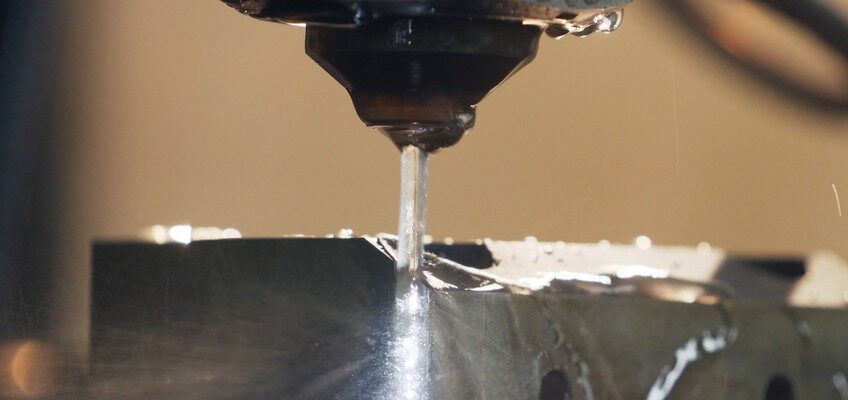For maximized cutting speed and to ensure you attain the perfect surface finish and part accuracy when wire EDM cutting, it is essential to ensure that the microscopic particles made during the process are removed for the best results – and that’s where ‘dielectric fluid’ comes into the picture.
Dielectric Fluid: What is it?
Dielectric fluid is any liquid with high dielectric strength and high electrical resistance. It’s an electrical insulator but in the form of a liquid. Common dielectric fluids include plant-based oils and mineral oils since they are inexpensive and readily available. Other fluids, such as fluorocarbons and silicones are sometimes used in instances where a non-flammable or high-temperature fluid is required.
When it comes to wire EDM cutting, the dielectric fluid used is deionized water. Deionized water…
- acts as a flushing agent that washes away any debris created during cutting.
- acts as a semiconductor between the workpiece and the energized wire to maintain controlled and stable conditions for ionization within the spark gap.
- can be chilled to ensure the worktable, workpiece, fixtures, and wire stay at a steady temperature; limiting the thermal growth of the machine and the workpiece so they can hold tight tolerances.
When an EDM machine is commissioned, deionized or distilled water with very low conductivity is initially used. Afterward, operators can use tap water as long as it has been passed through a deionizing resin bottle where electrically charged particles are neutralized, and all contaminants are filtered out. The deionized water is then passed through a 3-micron to 5-micron filter paper to remove any residual particles.
Since the wire EDM cutting process creates microscopic particles, ensuring the chips are removed is key to attaining accuracy and maximizing cutting speeds.
For the dielectric fluid to be considered an effective flushing agent, it must flow freely to the point where cutting is taking place. Considering that each spark melts microscopic bits of the workpiece, the liquid removes the bits and keeps them from adhering to the workpiece surface and the wire.
Adjustable flushing nozzles located near the bottom and top of the workpiece direct a stream of the fluid, from opposite directions, into the zone where the cutting is taking place.
When set properly, streams from the nozzles and flushing pressure meet in the middle, producing something known as the ‘rooster tail’ effect. The effect can be seen on the slug removed after the roughing pass.
If the microscopic debris is coming mostly from the bottom part of the solid being cut, then chances are the flushing is unbalanced. When that happens, the wire ends up passing across or through the workpiece surface, weakening it. That, in turn, affects cutting conditions and leads to frequent wire breakages.
Furthermore, when the flushing pressure is too high, it could lead to deflection and vibration of the wire, especially when working on tall workpieces. In such instances, the conditions affect the accuracy and surface finish of the part being cut.
Electrical Discharge Machining Filtration
To get the most out of a wire machine, users must ensure their dielectric fluid stays clean at all times. If it becomes too dirty, some of the materials will start rusting inside the tank, affecting the surface finish. Good maintenance practices include sending the deionizing bottle for regeneration and periodically-replacing the system’s paper-filter cartridges.
It is worth noting that some materials clog the paper filters more rapidly than others when cut. For instance, when working on parts that have been additively manufactured, internal pockets of loose, unsintered metal particles may penetrate the system, clogging the filter.
Of course, you don’t have to know any of this when we’re cutting for your projects. We take care of the details to get your job done right!

